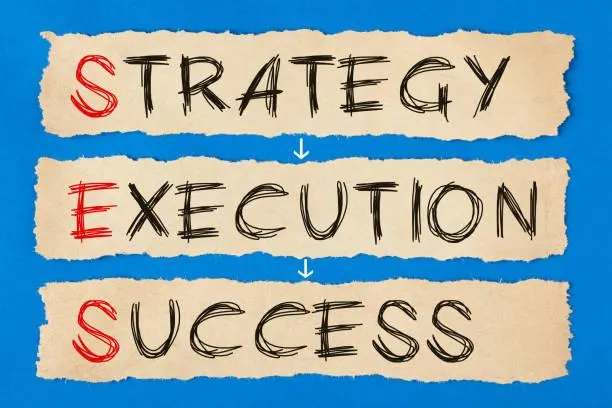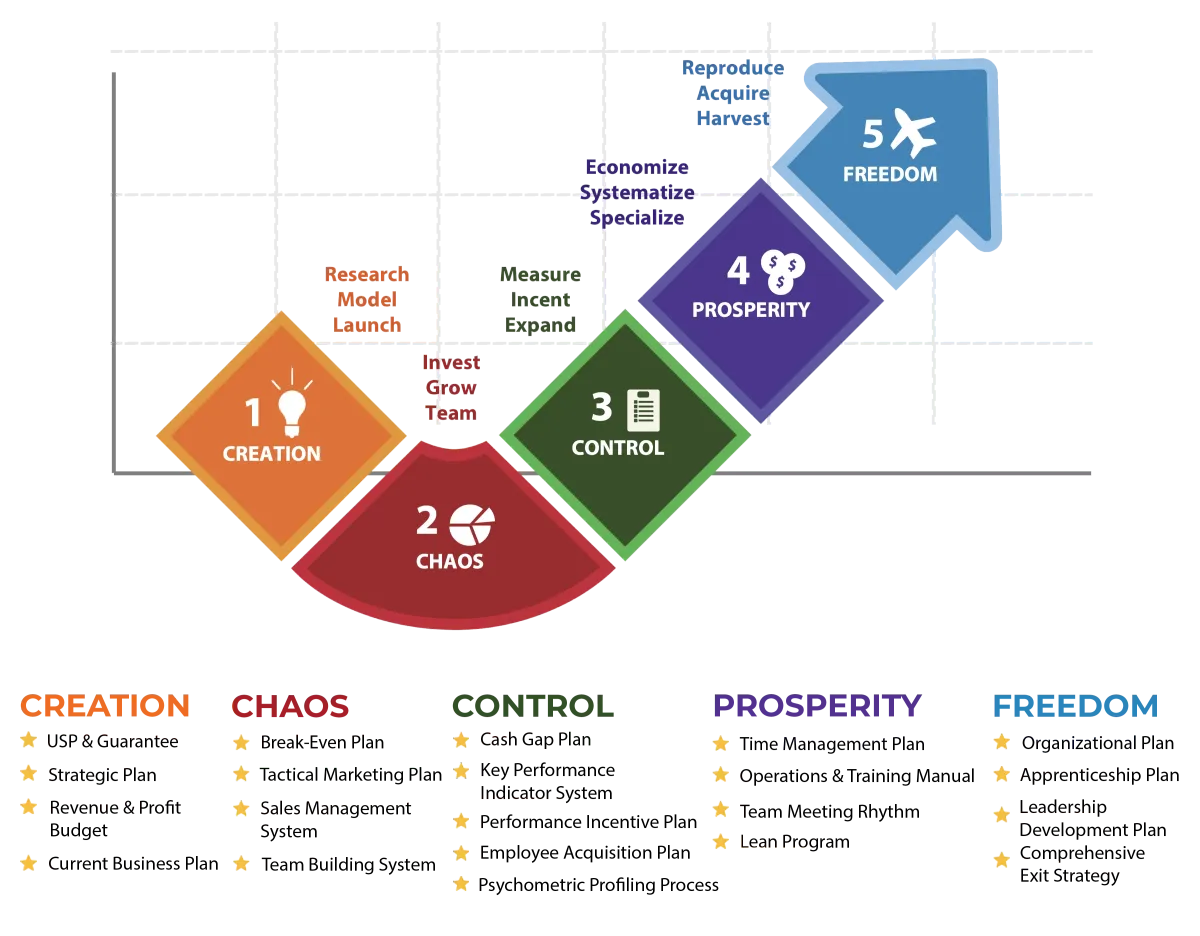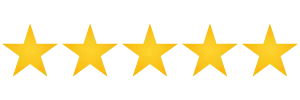AI IS A TOOL. NOT THE Solution.
HOW TO STOP YOUR BUSINESS FROM EATING YOUR LIFE:
Long before AI and Automations There Have Always
Been Real Strategies To Build And Scale Lean Profitable Business.
Silver Bullet 1: The Right Strategy at the Right Time
Why strategy is more than a plan
A strategy is not just a list of goals — it’s a framework for choosing what you will do and, just as importantly, what you won’t do. McKinsey research shows that companies that regularly revisit and adapt their strategy outperform peers by 60% in shareholder returns. The key is clarity: knowing exactly how your current priorities connect to your long-term vision.
The danger of “strategy drift”
When owners and leadership teams don’t have a shared, documented strategy, decisions get made in isolation. The business slowly shifts from intentional to reactive. Over time, small, unaligned decisions compound into big misalignments.
Practical framework for staying on course:
Define the long-term vision – A vivid, measurable description of where you want to be in 3–5 years.
Identify strategic priorities – Three to five focus areas that will move you toward the vision.
Set clear measures of success – Quantifiable metrics for each priority.
Review and recalibrate quarterly – Keep strategy relevant as conditions change.
What Now?
Implement facilitated strategic planning sessions that get the right voices in the room, challenge assumptions, and produce a clear, actionable roadmap. The process ensures every decision aligns with your highest priorities, so resources and energy go where they create the most impact.
Silver Bullet 2: Building a Culture That Works Without You

Culture is the multiplier
You can have the best plan in the world, but without a strong culture, execution will falter. Gallup data shows that companies with healthy cultures see 29% higher profitability and 72% lower attrition. Culture, when intentional, is what allows the business to perform consistently without the owner’s constant presence.
What culture really is
Culture is not perks or slogans. It’s the shared values, beliefs, and behaviors that guide how work gets done. Without intentional design, culture defaults to the loudest personalities or the path of least resistance.
The scalable culture framework:
Defined Core Values – Short, memorable, and non-negotiable.
Behavioral Standards – Clear examples of “what right looks like.”
Embedded Rituals – Regular actions that reinforce values.
Leadership Modeling – Leaders embody values daily.
Why documentation matters
Documenting your culture ensures consistency across teams and locations. SHRM reports that formalized culture documents correlate with a 20% increase in employee engagement.
What Now?
Run facilitated workshops to identify your core values, translate them into actionable behaviors, and embed them into daily operations. The result is a self-sustaining culture that makes good decision making the standard.
Silver Bullet 3: Making Meetings Matter

The meeting problem
Executives spend an average of 23 hours per week in meetings, yet 71% say they are unproductive. Meetings often lack focus, structure, and outcomes.
Meetings as a decision-making tool
Purpose-driven meetings align teams, remove roadblocks, and speed execution. They’re not for updates — those belong in asynchronous channels — they’re for decisions and problem-solving.
The meeting framework:
Define the objective
Prepare the agenda in advance
Assign clear roles
Close with decisions and action items
Send follow-up within 24 hours
Cadence Matters
Daily huddles (5–15 minutes)
Weekly tactical meetings (60–90 minutes)
Quarterly strategy sessions (half-day or full-day)
Annual planning retreats (1–2 days)
What Now?
Train teams in meeting structures that drive measurable outcomes and free up hours each week. The result: fewer meetings, but more impact.
Silver Bullet 4: Creating Accountability Without Micromanaging

Accountability is not control
True accountability means people own their commitments and deliver without constant supervision. It is the opposite of micromanagement.
The ownership framework:
Clear expectations
Documented commitments
Transparent tracking
Regular check-ins
Consequences and recognition
Why public tracking works
Visible scoreboards create peer accountability. Studies show goal achievement jumps to 95% when paired with accountability check-ins.
What Now?
Design simple, transparent accountability systems so leaders can step back without performance slipping.
Silver Bullet 5: The Time Trap — Freeing Leaders from Constant Firefighting

Why time leaks
Leaders lose hours each day to interruptions, low-value tasks, and decision fatigue. Without a system, urgent work crowds out important work.
Core principles:
Protect time for high-value, strategic work
Delegate anything repeatable and teachable
Use a default weekly calendar to set the rhythm
Avoid the trap of being “always available”
What Now?
Leaders must map their time, identify low-value patterns, and replace them with leverage activities that drive long-term results.
Silver Bullet 6: Time Management Plan

Why time slips away
Even high-performing leaders lose hours to distractions and poor planning. Research shows each interruption can cost over 20 minutes to recover focus.
The Four Quadrants framework
Prioritize work that is important but not urgent — where systems, growth, and relationships live. Avoid the trap of living only in urgent tasks.
Key tactics:
Timebox your calendar
Counter Parkinson’s Law with shorter deadlines
Track and tag your time by quadrant
Delegate decisively
Hire for recurring gaps
Build a default weekly calendar and protect it
Quick start checklist
Kill or delegate one low-value recurring task today
Schedule two “Quadrant 2” blocks next week
Timebox your top three priorities
Cut work to fit the block, not the other way around
What Now?
Install a time management system your whole leadership team can use, ensuring everyone operates from a shared calendar language and accountability structure.
How We Help

At J.W. Crawford, our work is built around one goal:
Helping business owners create companies that run smoothly without their constant oversight.
We don’t just give advice — we facilitate, document, and install the systems your business needs to perform at a high level every day.
That means:
Guiding your leadership team through strategy sessions that clarify priorities and focus resources where they have the most impact.
Building a culture that supports accountability, initiative, and consistent performance at every level.
Designing meeting structures that produce decisions, not just discussions.
Implementing accountability systems that keep projects on track without micromanagement.
Installing time and priority management frameworks that free leaders from constant firefighting.

If you’ve found value in these six silver bullets, they’re just the beginning.
When these systems are in place, the result is predictable growth, a healthier team dynamic, and a business that can scale without consuming your time and energy.
We’ve identified 21 in total — each one a proven, step-by-step strategy to take your business from chaos to freedom.
Where Is Your Business On The
Rise To Freedom?

Implementing just one of these 21 growth focused strategies could
be the change your business needs to gain the freedom you deserve.
Advice and answers from our team.
Asked Questions (FAQ's)
What is an AI Opportunity Audit?
An AI Opportunity Audit is a two-week process where we analyze your workflows, identify inefficiencies, and reveal automation opportunities that can save time, reduce costs, and unlock new revenue streams.
Who is this service for?
Our consulting is tailored for professional services providers, like Financial Advisory firms, Tax Advisory firms, Real Estate Brokerages, & Commercial Services firms who want to scale faster, reduce repetitive work, and get clarity on where AI can bring the biggest impact.
Do you implement the recommended solutions after our AI Opportunity Audit?
Yes. After the audit, we provide a clear implementation roadmap. We can either support your team in executing it or manage the full automation build for you.
Can you prove my ROI
Yes! We use a simple but powerful ROI model that translates hours saved into annual cost savings and potential revenue gains. You'll see the numbers before making any investment.
How long does it take to see results after our AI Opportunity Audit?
We combine deep technical expertise (n8n Ambassador, full-stack development) with hands-on Project Management experience building and integrating automations for agencies and firms worldwide. No fluff—just results.
We focus on the relationships
As Much As The Results
"I'm facing some things that I'm too busy to
face, but I need to face them!"
Jade N.

"Within 5 minutes of talking with Joseph you will have that confidence that you're wanting."
Mark J.


Gold Harvest Group
"Working with Joseph was a breath of fresh air into the noise of marketing. He asked great questions to really get to know who I am and what my business does."
Roman L.


360 Property Group
"He is a valuable asset for any team, he embodies the qualities of a dedicated and caring professional. I surely look forward to doing more work with him in the future!"
Mack H.

"You've done everything you said...
You instill confidence in me"
Marco B.

"It feels personal. It doesn't feel like we're
just another client"
Michael H.


1st Shield Financial
"His knowledge and client-focused approach demonstratively delivered excellence for outstanding results."
Kim B.


Symmetry Financial
I now have a team that is setting appointments for me and getting great traction to my website."
Shonda S.

0% Risk | 100% Value


Innovation
Fresh, creative solutions.

Integrity
Honesty and transparency.

Excellence
Top-notch services.
FOLLOW US
Copyright 2025. J.W. Crawford Management. All Rights Reserved.
